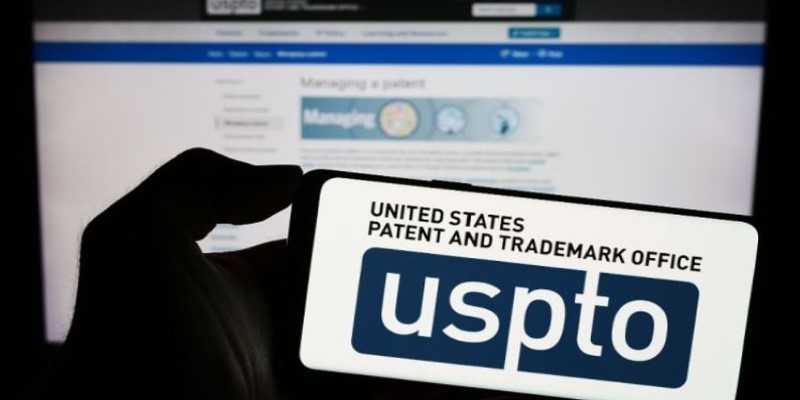The Step-by-Step Guide to Trademarking Your Name
Building a brand is not just about a catchy name—it’s about ownership. Imagine investing years into a business name, only to find out someone else has legally claimed it. That’s where trademarks come in. They give you exclusive rights to your brand name, preventing others from using it without permission. But how do you trademark a name? The process may seem like a maze of legal jargon, but it’s actually straightforward if you know what steps to take.
Whether you are a small business owner, an entrepreneur, or looking to protect a creative project, knowing how to trademark a name is essential. This guide will walk you through the entire trademark registration process so that you can safeguard your brand easily.
Understanding What a Trademark Is
Trademark protection gives an owner the exclusive use right over a business name, logo, or symbol. This helps distinguish business products or services from one business to another. Imagine big brands such as Nike, Apple, or Coca-Cola, where the names and logos are protected by law, meaning no one can profit from their reputation.
The trademark is distinct from a copyright or a patent. Copyrights protect artistic works about books and music, while patents protect inventions. A trademark actually guards brand identifiers. This means that when you're building an identifiable name within your industry, trademarking is essential. Without it, your brand can be copied, diluted, or even legally challenged at worst.
The Trademark Registration Process
Trademarking a name involves several legal steps, but the process is manageable with the right approach. Here’s how it works:
Conduct a Trademark Search
Before you file for the trademark, it is important to make sure that someone else has not yet claimed the name. This is done through a trademark search. The United States Patent and Trademark Office (USPTO) also presents a web-based interface where you can check for existing trademarks. That is why sometimes your application might get denied if the name resembles one that already exists in the same industry.

If the name is available, it’s still a good idea to do a deeper search. Some businesses may have common law rights to a name even if they haven’t registered it federally. Consulting a trademark attorney can help avoid potential conflicts.
Determine the Right Trademark Category
Trademarks are registered under specific categories known as “classes.” These classes define the type of products or services associated with the name. For example, a trademark for a clothing brand falls under a different class than a trademark for a software company. Choosing the right class is crucial because trademarks only protect your name within the category in which it’s registered.
Prepare and File the Application
Once you confirm the name is available, the next step is applying with the USPTO. The application requires:
- Your personal or business details
- A description of the name and its intended use
- The trademark class
- A sample showing how the name is used in business (e.g., on a website, product, or marketing material)
The USPTO charges a fee for each class you apply under. Applications can be filed online through the Trademark Electronic Application System (TEAS). After submission, you’ll receive a confirmation and a tracking number.
Examination by the USPTO
Once submitted, the application goes through a review process by a USPTO examiner. The examiner checks for conflicts with existing trademarks, compliance with legal requirements, and clarity of the application. If there are any issues, you may receive an Office Action, which is a request for clarification or additional information.
If your application passes the examination, it moves to the next stage: publication.
Publication and Opposition Period
Before your trademark is officially approved, it is published in the USPTO’s Trademark Official Gazette. This allows the public to review the application and raise objections if they believe the trademark infringes on their existing rights. If no one opposes it within 30 days, the application proceeds to the final stage.
Trademark Approval and Registration

If no objections arise, or if you successfully resolve any disputes, your trademark gets approved. You will receive a certificate of registration granting you exclusive rights to the name within your designated category. This means no one else can legally use your name for the same type of business.
Maintaining Your Trademark
Trademark registration isn’t a one-time process—it requires maintenance. You must file periodic renewal applications to keep it active. In the U.S., the first renewal is due after five years, followed by another at ten years, and every ten years after that. Failure to renew could result in losing your trademark rights.
Why Trademarking a Name Matters?
Trademarking a name isn’t just a legal formality—it’s an investment in your brand’s security. Without a trademark, competitors could use similar names to confuse customers or even claim your brand as their own. This could lead to legal disputes, loss of business, and damage to your reputation.
Trademarks also increase a business's value. If you ever plan to sell your company or license your brand, having a registered trademark makes it more attractive to investors and buyers. It shows that your business is legitimate, well-protected, and unique.
Additionally, a trademark gives you legal grounds to take action against infringement. If someone tries to copy or misuse your name, you can send a cease-and-desist letter or take legal action to stop them. Without a registered trademark, your options for protecting your brand are much more limited.
Conclusion
Trademarking a name might seem like an extra step, but it’s a crucial part of building a lasting brand. It gives you exclusive rights, prevents competitors from using your name, and adds value to your business. While the trademark registration process involves research, paperwork, and legal review, it’s a small effort compared to the long-term benefits. If you’re serious about protecting your brand, don’t wait. Conduct a trademark search, file your application, and secure your name before someone else does. A strong brand starts with ownership, and trademarking is the key to making your name legally yours.












